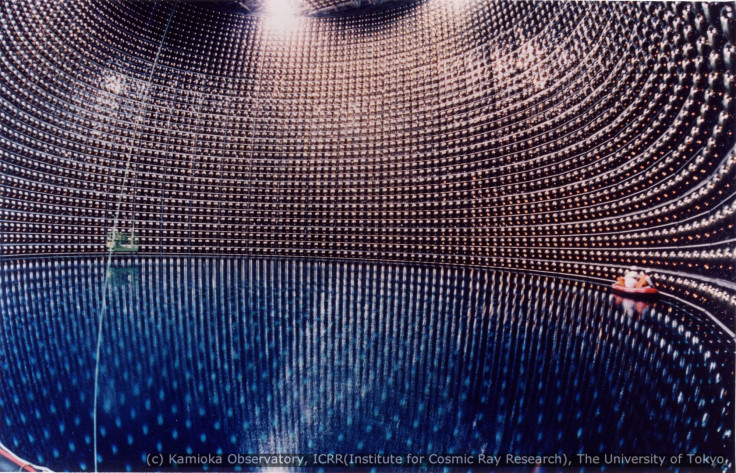Exploring The Matter-Antimatter Asymmetry To Explain Why Anything Exists In The Universe

If all the matter in existence — from miniscule atoms to gigantic galaxy clusters — strictly followed the theories of the Standard Model of physics, then all of it would have an equal amount of antimatter, and the two together would annihilate each other, leading to the existence of precisely nothing. But since there is something instead of nothing, scientists have long tried to understand this asymmetry between the amounts of matter and antimatter in the universe.
This violation of the matter-antimatter symmetry is called the charge-parity (CP) violation, and evidence of the CP violations is being looked for by — among other experiments — the different rates of neutrino and antineutrino oscillations, recorded by an international team of researchers working on the T2K experiment. That is an abbreviation for Tokai-to-Kamioka and the experiment is located in Japan.
For its operation, T2K needs beams of high intensity muon neutrinos, which are generated at Japan Proton Accelerator Research Complex in Tokai, along the northeastern coast of the country. From there, the beams are fired southwest, toward the Super-Kamiokande detector 295 kilometers (183 miles) away in Gifu Prefecture. If a difference were to be found between the rates of oscillations of separate neutrino and antineutrino beams, that would be proof of the imbalance between matter and antimatter.
Read: Simpler, Cheaper Method To Detect Neutrinos
As they travel, the neutrinos and antineutrinos change their “flavor” from muon to electron. And the first dataset from T2K shows it detected 32 electron neutrinos and only 4 electron antineutrinos, indicating there is more physics beyond the Standard Model.
“While the data sets are still too small to make a conclusive statement, we have seen a weak preference for large CP violation and we are excited to continue to collect data and make a more sensitive search for CP violation,” Mark Hartz from the Kavli Institute for the Physics and Mathematics of the Universe in Kashiwa, Japan, and a T2K collaborator, said in a statement Tuesday.

The first T2K dataset was published in April, and the experiment has finished recording its second set of data as well. To be published later in 2017, the data is double the earlier amount. Collection of data for T2K is expected to continue for another 10 years.
“If we are lucky and the CP violation effect is large, we may expect 3 sigma evidence, or about 99.7 percent confidence level, for CP violation by 2026,” Hartz said in the statement.
Several experiments at CERN in Europe are studying the properties of antimatter, including looking for signs of the matter-antimatter asymmetry. Some of those experiments — such as GBAR, AEGIS and ALPHA — are studying the effects of gravity on antimatter.
According to the Standard Model, an equal amount of matter and antimatter was created at the time as the Big Bang. Yet, there is a lot more matter today than its negating counterpart. It could be because in reality, more matter than antimatter was created in the beginning, or because of an asymmetry in the way matter and antimatter interact.
Experiments like T2K are designed to study the possible asymmetry.
© Copyright IBTimes 2024. All rights reserved.











